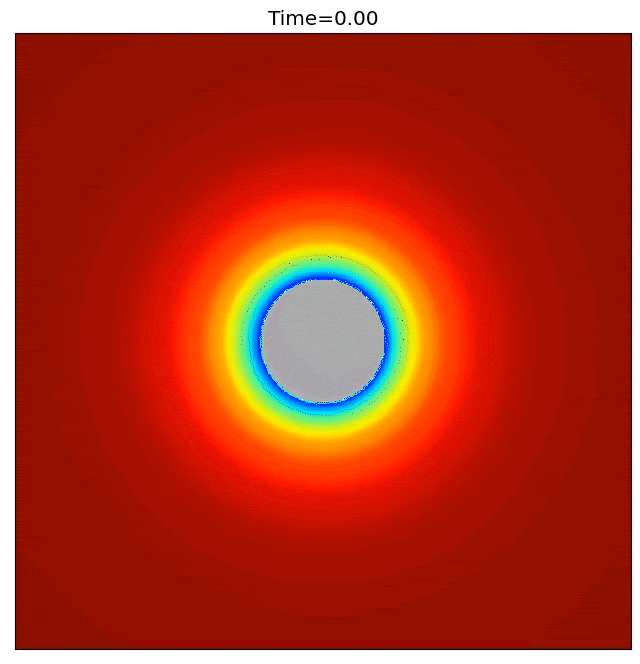A new theory for electrophoretic velocity
Lauren Smith
Sep 19, 2023

Source: Richard Cobos
As the strength of the electric field increases, the spherical symmetry of the charge distribution around the particle changes.
When salt dissolves in water, the salt ionizes. An electrically charged particle in saltwater will attract the ions of the opposite charge. Applying an electric field across the solution causes the particle to move to the terminal that has the opposite charge.
Researchers at Carnegie Mellon University have deepened the understanding of this phenomenon, called electrophoresis. They used numerical computations to find the nonlinear behavior of the electrophoretic velocity as a function of the electric field.
In weak electric fields, if you increase the voltage by a factor of two, the rate at which the particle moves also increases by a factor of two. This is a linear response. The literature, however, shows that as the electric field gets stronger, there are nonlinear effects in the velocity of the particle.
"Most of the research in the last 100 years in electrophoresis has been in that linear regime. Richard Cobos has pushed the understanding of electrophoresis to regimes where the voltage is really large and you don't get a linear response," says Aditya Khair, a professor of chemical engineering.
Richard Cobos has pushed the understanding of electrophoresis to regimes where the voltage is really large and you don’t get a linear response.
Aditya Khair, Professor, Chemical Engineering
Khair and Cobos, a Ph.D. student in chemical engineering, quantified the nonlinear response. Their work was supported by the National Science Foundation and published in the Journal of Fluid Mechanics. "We found that in a really strong electric field, the velocity again becomes linear," says Cobos.
Their computations show how the distribution of dissolved salts around the particle changes when you apply an electric field. "It affects the motion of the particle in a pretty intricate way. You're dealing with fluid mechanics, electrostatics, and physical chemistry," says Khair.
In a weak electric field, the charge distribution is spherically symmetrical around the particle. As the field gets stronger, the charge distribution loses its spherical symmetry. Then, as the field gets even stronger, the spherical asymmetry is increased because the charge is stripped from the particle. "It has less of an influence on the particle motion, and that's why we go to that other linear regime," says Cobos.
If you want to try to exploit some of the nonlinear features that you can see when you apply strong electric fields, you need to know how fast your particles are moving.
Aditya Khair, Professor, Chemical Engineering
Khair and Cobos validated their calculations against experimental results. "There's been an interest in doing experiments in this area over the last 10 years. There is actually a practical need to develop a theory or computations for this. It's not just calculating stuff that can never be measured," says Khair.
Their new theory predicts the experiments. "We can use that nonlinear response to find new ways of transporting particles or separating particles," says Khair.
One possible application is electrophoretic coating, a process used to apply materials, including polymers, pigments, dyes, ceramics, and metals, to an electrically conductive surface. "Knowing how the velocity will scale depending on the electric field is useful," says Cobos, because those who want to accelerate the process can't simply apply a stronger electric field.
"If you want to try to exploit some of the nonlinear features that you can see when you apply strong electric fields, you need to know how fast your particles are moving," adds Khair.
Continuing their work beyond direct current fields, Khair and Cobos are researching the time-dependent behavior of electrophoresis. "We want to see how these nonlinear effects affect how the particle will move under an AC field and how we can exploit that to have a net migration in a given direction," says Cobos.
For media inquiries, please contact Lauren Smith at lsmith2@andrew.cmu.edu.
